
Alastair Preston Reynolds is a British science fiction author. He specialises in hard science fiction and space opera. He spent his early years in Cornwall, moved back to Wales before going to Newcastle University, where he studied physics and astronomy. Afterwards, he earned a PhD in astrophysics from the University of St Andrews. In 1991, he moved to Noordwijk in the Netherlands where he met his wife Josette. There, he worked for the European Space Research and Technology Centre until 2004 when he left to pursue writing full-time. He returned to Wales in 2008 and lives near Cardiff.

From the Earth to the Moon: A Direct Route in 97 Hours, 20 Minutes is an 1865 novel by Jules Verne. It tells the story of the Baltimore Gun Club, a post-American Civil War society of weapons enthusiasts, and their attempts to build an enormous Columbiad space gun and launch three people — the Gun Club's president, his Philadelphian armor-making rival, and a French poet — in a projectile with the goal of a Moon landing. Five years later, Verne wrote a sequel called Around the Moon.

Richard Kingsley Morgan, is a British science fiction and fantasy author of books, short stories, and graphic novels. He is the winner of the Philip K. Dick Award for his 2003 book Altered Carbon, which was adapted into a Netflix series released in 2018. His third book, Market Forces, won the John W. Campbell Award in 2005, while his 2008 work Thirteen garnered him the Arthur C. Clarke Award.
Orion's Arm is a multi-authored online science fiction world-building project, first established in 2000 by M. Alan Kazlev, Donna Malcolm Hirsekorn, Bernd Helfert and Anders Sandberg and further co-authored by many people since. Anyone can contribute articles, stories, artwork, or music to the website. A large mailing list exists, in which members debate aspects of the world they are creating, discussing additions, modifications, issues arising, and work to be done.
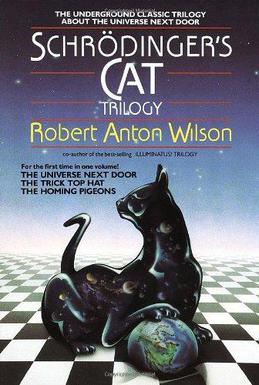
The Schrödinger's Cat Trilogy is a trilogy of novels by American writer Robert Anton Wilson consisting of The Universe Next Door (1979), The Trick Top Hat (1980), and The Homing Pigeons (1981), each illustrating a different interpretation of quantum physics. They were collected into an omnibus edition in 1988.
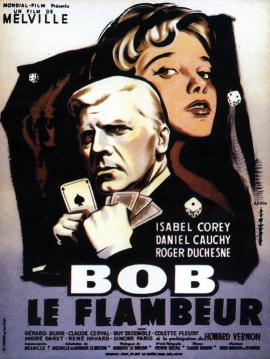
Bob le flambeur is a 1956 French heist gangster film directed by Jean-Pierre Melville and starring Roger Duchesne as Bob. It is often considered both a film noir and a precursor to the French New Wave, the latter because of its use of handheld camera and a single jump cut.

John R. Gribbin is a British science writer, an astrophysicist, and a visiting fellow in astronomy at the University of Sussex. His writings include quantum physics, human evolution, climate change, global warming, the origins of the universe, and biographies of famous scientists. He also writes science fiction.

In condensed matter physics, Hofstadter's butterfly is a graph of the spectral properties of non-interacting two-dimensional electrons in a perpendicular magnetic field in a lattice. The fractal, self-similar nature of the spectrum was discovered in the 1976 Ph.D. work of Douglas Hofstadter and is one of the early examples of modern scientific data visualization. The name reflects the fact that, as Hofstadter wrote, "the large gaps [in the graph] form a very striking pattern somewhat resembling a butterfly."

Schrödinger's cat is a thought experiment, usually described as a paradox, devised by Austrian physicist Erwin Schrödinger in 1935. It illustrates what he saw as absurdities in the views that other physicists had about quantum mechanics, by applying them not to microscopic objects but to everyday ones. The thought experiment presents a cat that might be alive or dead, depending on an earlier random event. In the course of developing this experiment, he coined the term Verschränkung (entanglement). It was not long before science-fiction writers picked up this evocative concept, often using it in a humorous vein. Works of fiction have employed Schrödinger's thought experiment as plot device and as metaphor, in genres from apocalyptic science fiction to young-adult drama, making the cat more prominent in popular culture than in physics itself.

Steph Swainston is a British literary fantasy/science fiction author, known for the Castle series. Her debut novel, The Year of Our War (2004), won the 2005 Crawford Award and a nomination for the John W. Campbell Award for Best New Writer.
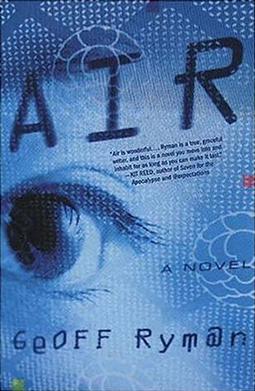
Air, also known as Air: Or, Have Not Have, is a 2005 novel by Geoff Ryman. It won the British Science Fiction Association Award, the James Tiptree, Jr. Award, and the Arthur C. Clarke Award, and was on the short list for the Philip K. Dick Award in 2004, the Nebula Award in 2005, and the John W. Campbell Memorial Award in 2006.

Sobornost is a Russian term whose usage is primarily attributed to the 19th-century Slavophile Russian writers Ivan Kireyevsky (1806-1856) and Aleksey Khomyakov (1804-1860). The term expresses the need for co-operation between people at the expense of individualism, on the basis that opposing groups focus on what is common between them. Khomyakov believed that the Western world was progressively losing its unity because it was embracing Aristotle and his defining individualism. Kireyevsky believed that G. W. F. Hegel and Aristotle represented the same ideal of unity.

The Eye of the Heron is a 1978 science fiction novel by American author Ursula K. Le Guin which was first published in the science fiction anthology Millennial Women.
In astronautics, a black hole starship is the theoretical concept of a starship capable of interstellar travel using a black hole as an energy source for spacecraft propulsion. The concept was first discussed in science fiction, notably in the book Imperial Earth by Arthur C. Clarke, and in the work of Charles Sheffield, in which energy extracted from a Kerr–Newman black hole is described as powering the rocket engines in the story "Killing Vector" (1978).

Zendegi is a science fiction novel by Australian author Greg Egan, first published in the United Kingdom by Gollancz in June 2010. It is set in Iran in the near future and deals with mapping the human brain, virtual reality and the democratization of Iran. The title of the book means "life" in Persian; the name of the virtual reality system featured in the story is Zendegi-ye Behtar, Persian for "better life".
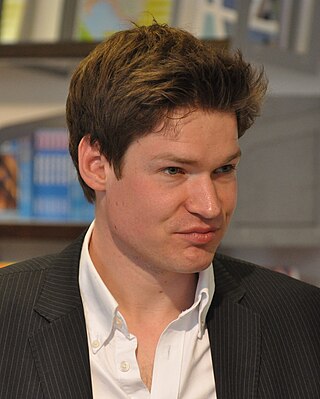
Hannu Rajaniemi is a Finnish American author of science fiction and fantasy, who writes in both English and Finnish. He lives in Oakland, California, and was a founding director of a commercial research organisation ThinkTank Maths.
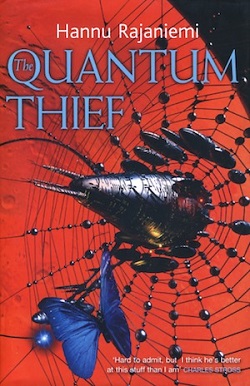
The Quantum Thief is the debut science fiction novel by Finnish writer Hannu Rajaniemi and the first novel in a trilogy featuring the character of Jean le Flambeur; the sequels are The Fractal Prince (2012) and The Causal Angel (2014). The novel was published in Britain by Gollancz in 2010, and by Tor in 2011 in the US. It is a heist story, set in a futuristic Solar System, that features a protagonist modeled on Arsène Lupin, the gentleman thief of Maurice Leblanc.
Quantum fiction is a genre of speculative fiction that reflects modern experience of the material world and reality as influenced by quantum theory and new principles in quantum physics. It is characterized by the use of an element in quantum mechanics as a storytelling device. The genre is not necessarily science-themed, and blurs the line separating science fiction and fantasy into a broad scope of mainstream literature that transcends the mechanical model of science and involves the fantasy of human perception or imagination as realistic components affecting the everyday physical world.
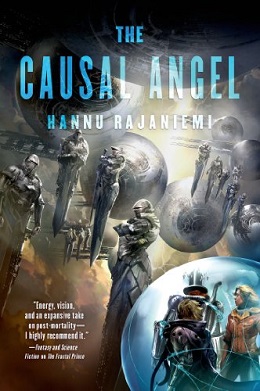
The Causal Angel is the third science fiction novel by Hannu Rajaniemi featuring the protagonist Jean le Flambeur. It was published in July 2014 by Gollancz in the UK and by Tor in the US. The novel is the finale of a trilogy. The previous novels in the series are The Quantum Thief (2010) and The Fractal Prince (2012).
















